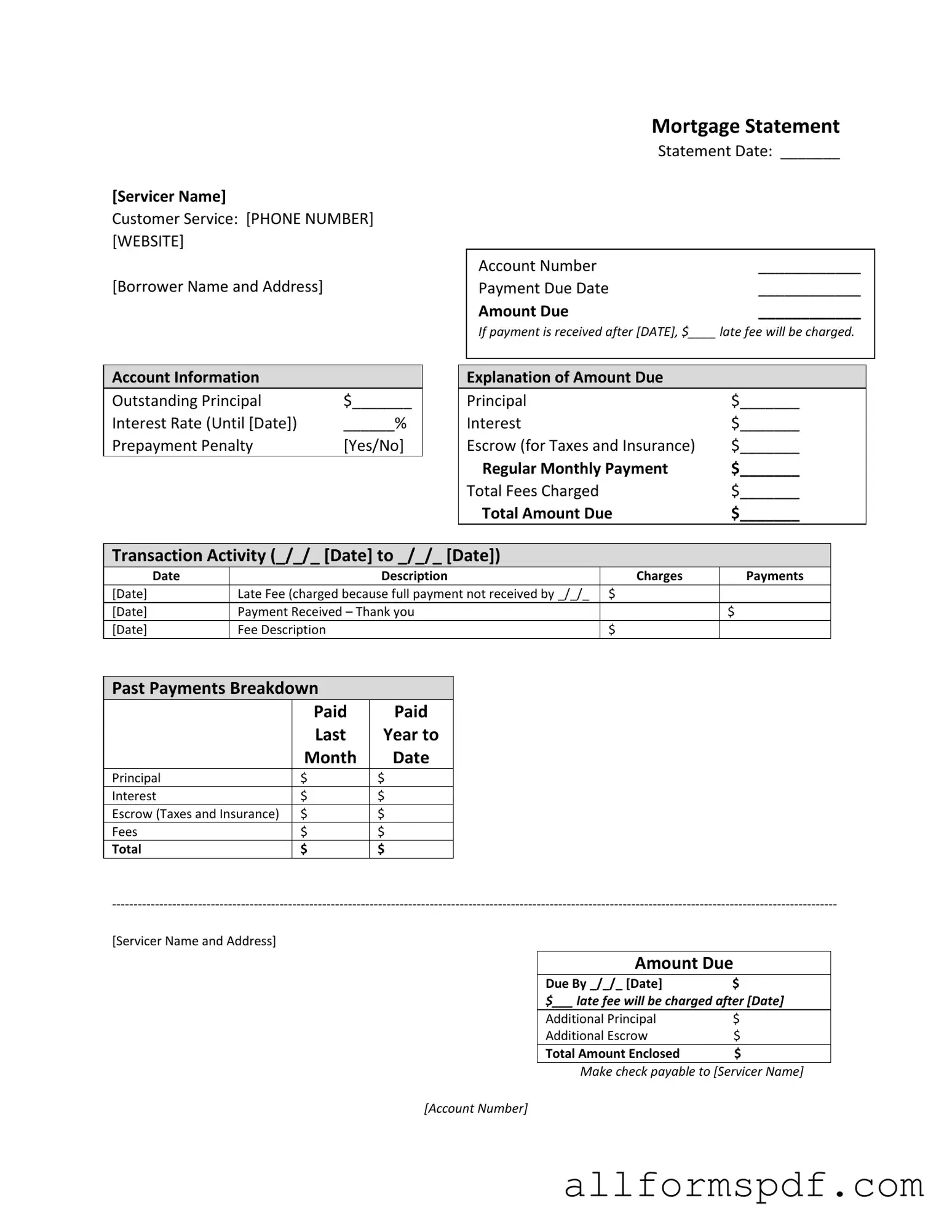When filling out the Mortgage Statement form, many people make common mistakes that can lead to confusion or delays. One frequent error is not including the correct Account Number. This number is crucial for identifying your mortgage account. Double-check this information to ensure it matches the statement.
Another mistake is neglecting to update the Borrower Name and Address. If there have been any changes, such as a marriage or relocation, it’s important to reflect that accurately. Inaccurate information can lead to miscommunication and delays in processing your payments.
Many individuals also forget to fill in the Payment Due Date correctly. This date is essential for determining when your payment is considered late. If you miss this, it can result in unexpected late fees.
Providing an incorrect Amount Due is another common issue. Ensure that you calculate the total amount accurately, including principal, interest, and any fees. An incorrect amount can lead to further complications down the line.
People often overlook the Transaction Activity section. It’s vital to review and fill this out accurately. This section provides a history of your payments and any fees charged. Missing this can create confusion about your payment status.
Not checking the Outstanding Principal and Interest Rate can also lead to mistakes. Ensure these figures are correct as they directly affect your payment amount. Any discrepancies can cause issues with your loan servicer.
Another common oversight is misunderstanding the Partial Payments policy. If you make a partial payment, it may not be applied to your mortgage until the full amount is received. Be sure to read this section carefully to avoid unexpected consequences.
People sometimes fail to respond to the Delinquency Notice. If you are late on your payments, it’s crucial to address this promptly. Ignoring this notice can lead to fees or even foreclosure.
Lastly, individuals may not utilize the resources available for those Experiencing Financial Difficulty. If you are facing challenges, seek assistance as soon as possible. There are options available that can help you manage your mortgage effectively.
